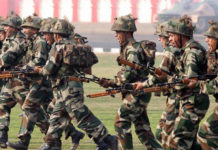Flight from fatigue: On the DGCA and flight duty time limitation norms
The DGCA must ensure regulatory norms are enforced for safety
The move by the Directorate General of Civil Aviation (DGCA) in January this year to introduce changes to flight duty time limitations (FDTL) would have been a much-needed regulatory step to address the industry issue of fatigue in a professional and scientific manner, or manage what crew call the burden of the red-eye flight. By dictating more rest time for pilots, redefining night duty and even directing airlines to file regular fatigue reports, the rules were to have been implemented no later than June 1. Instead, a large section of the managements of India’s airlines, most in private hands, only saw red. In a discordant development this week, the DGCA quietly inked a copy of the revised Civil Aviation Requirements (CAR) which said that scheduled air transport operators ‘may continue to operate in compliance with CAR Section 7 Series J Part III dated 24th April 2019 till approval of their respective scheme in compliance with this CAR’. Read in perspective, it meant this: airline economics had blanketed out safety. As highlighted in the media, a federation of Indian airlines had sought a postponement of the rules by pushing the line that the new norms would necessitate the hiring of between 15% to 25% more pilots over a 10-month period and could even result in a nearly 20% cancellation of flights during the peak summer season. But, as a number of aviation experts point out, with the DGCA now willingly lowering a safety net, pilots will continue to face fatigue-related issues.
In the early 1950s, recognising the need to limit flight and duty hours for the purpose of safety, the International Civil Aviation Organization established guidelines, under its Standards and Recommended Practices, which required the operator to ensure that fatigue did not endanger operations. Since then, the management of fatigue in the industry, especially in international operations, has evolved to include the adoption of Fatigue Risk Management Systems — which the DGCA is also planning — by tapping into scientific principles of fatigue management and aviation scheduling principles. The Indian aviation market, in the backdrop of a pilot shortage, is in high growth mode, and with increased flying flowing from an expanding route map, domestically and internationally, there are cases of the well-being of flight crew facing much stress. Ultra-long haul flying, with its own ecosystem of issues, is on the rise too with more widebody aircraft being inducted in India. Instead of taxiing back to holding point, the DGCA needs to demonstrate an independence where it will still ensure that regulatory norms are enforced and also aligned with the highest standards of safety, for flight crew and passengers deserve safer flying.
















